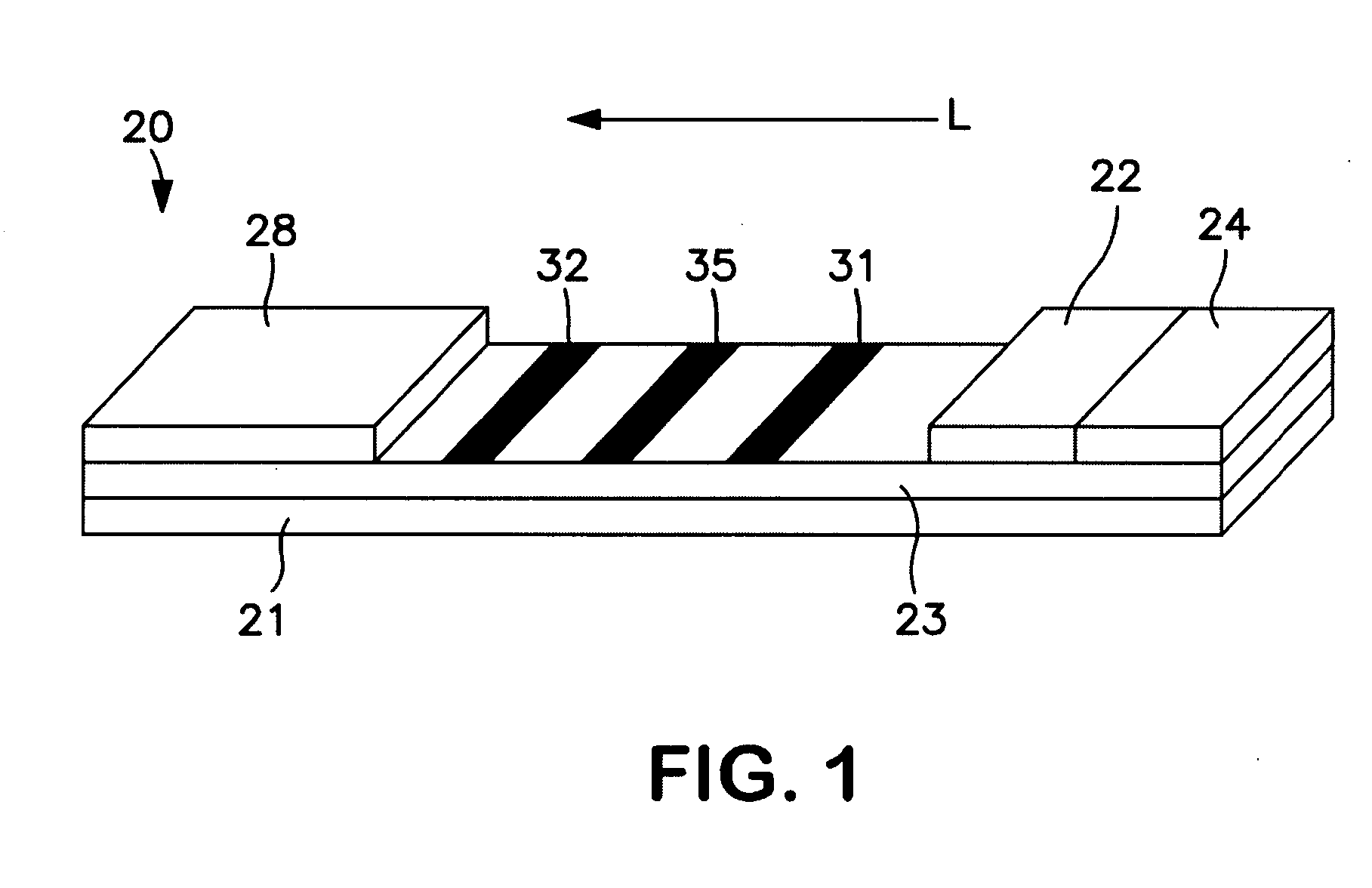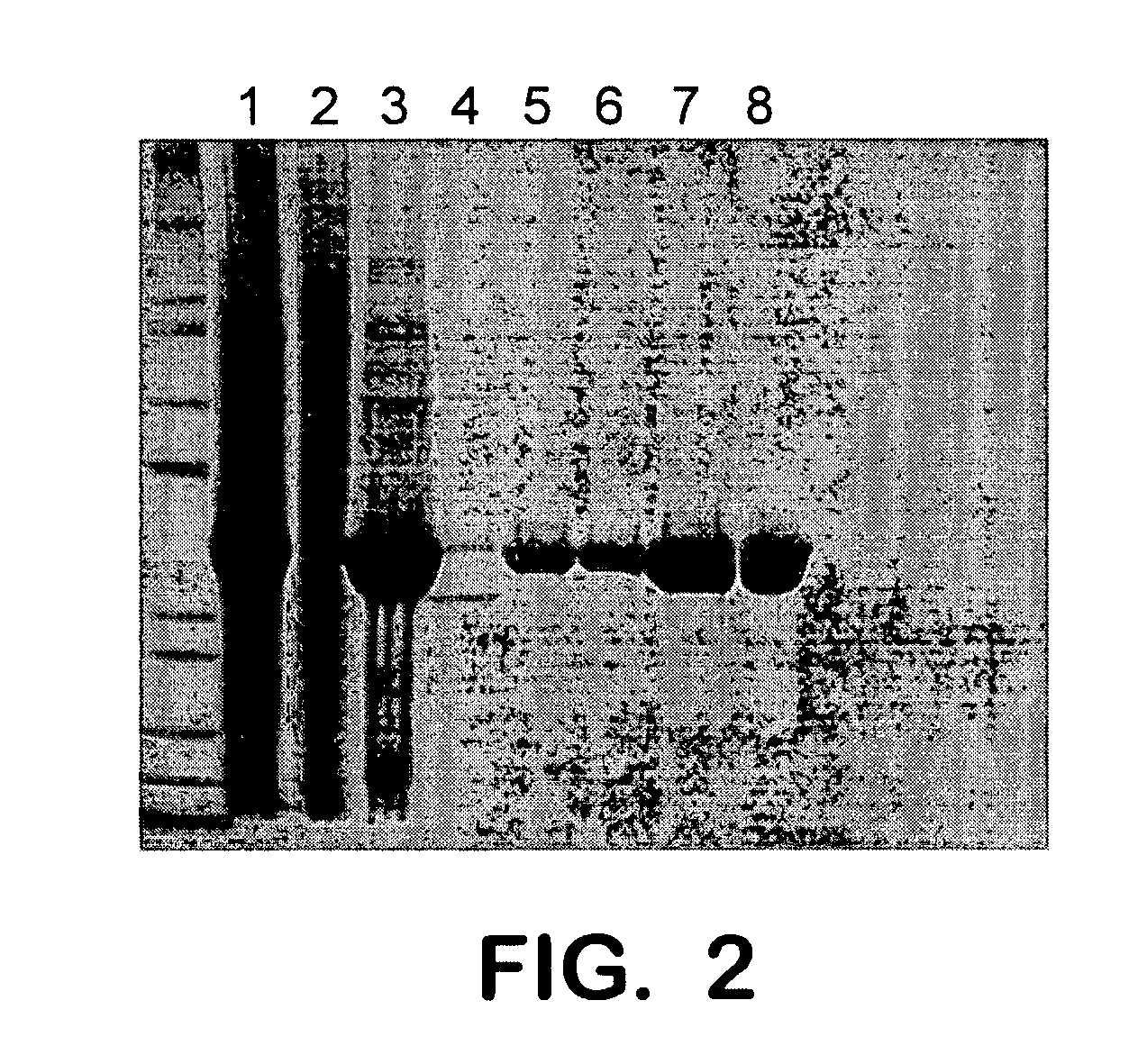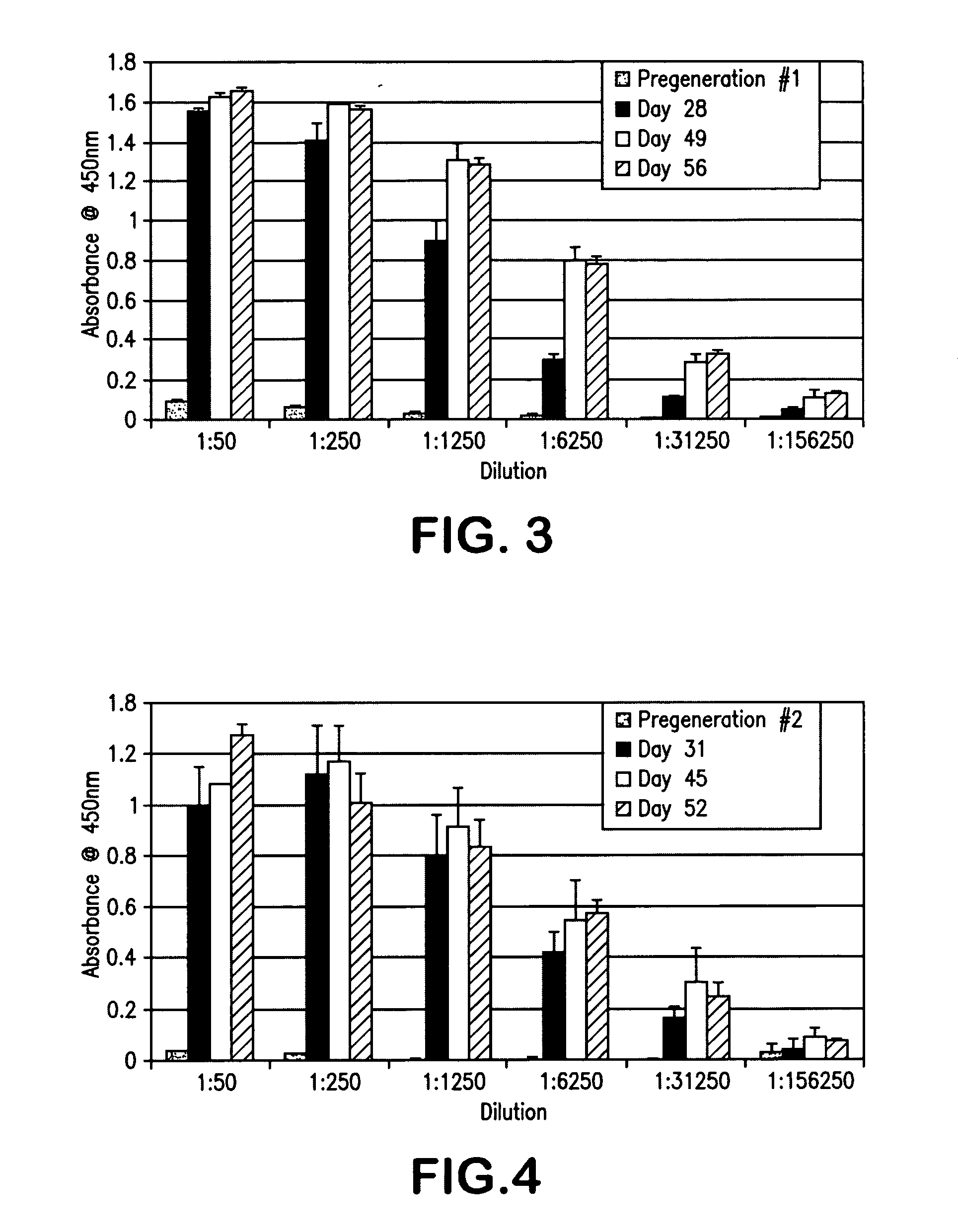Detection of secreted aspartyl proteases from Candida species
a technology of proteases and secreted aspartyls, applied in the field of detection of secreted aspartyl proteases from candida species, can solve the problems of affecting the diagnosis accuracy
- Summary
- Abstract
- Description
- Claims
- Application Information
AI Technical Summary
Benefits of technology
Problems solved by technology
Method used
Image
Examples
example 1
[0091] Genomic DNA from Candida albicans culture (ATCC strain 10231 D) was isolated and the target SAP3 gene was amplified via PCR. SAP3Δ18 was successfully subcloned into an E. coli expression vector, pET28 (available from Novagen) and a total of 75 mg of protein (32 kDa) was obtained from 400 ml of bacterial culture and purified using an FPLC via a c-terminal 6× histidine tag. This protein was solubilized in 6M urea and refolded via dialysis in 1×PBS.
[0092]FIG. 2 illustrates the purification analysis of the SAP3 protein obtained. With reference to the Figure, individual lanes illustrate the following: lane 1—total lysate, lane 2—soluble fraction, lane 3—insoluble fraction, lane 4-flow through, lane 5—low imidazole wash, lane 6—high imidazole elution, lane 7-high imidazole elution, and lane 8—after dialysis.
[0093] IgGs were generated in two separate runs (referenced as runs #1 and #2 in the Figures and Tables). FIGS. 3 and 4 illustrate the response of the IgGs generated over the ...
example 2
[0097] Endogenous SAP proteins produced by hyphal Candida albicans cells in culture were detected via the polyclonal antibody developed in Example 1.
[0098] Previous studies have detected the presence of mRNA transcripts of SAP genes when bovine serum albumin (BSA) is an available food source. Ross et al. (1990) showed a peak expression of SAP proteins at 12 and 20 hours after changing cells from a standard growth media containing peptone (YPD) to a media containing 0.2% BSA (YBD). Accordingly, an in vitro culture of C. albicans (ATCC strain 10231 D) was induced to make the transition to hyphal cells via growth at 37° C. in YBD media. The presence of hyphal cells at 18 hours was verified by visual inspection under a microscope (FIGS. 7A and 7B).
[0099] A culture of the C. albicans cells was grown in 20 ml of YBD media at 37° C. with an adjusted pH of 4.5 and samples of the culture supernatant were collected at 0, 24, 48 and 72 hours. Supernatant samples were run on a 4-12% SDS-Page ...
example 3
[0102] Endogenous SAP proteins were purified from culture supernatant by binding to pepstatin A immobilized on an agarose column. Pepstatin A is a tight-binding reversible inhibitor of aspartyl proteinases such as the Candida SAPs. Most peptidases of other catalytic types do not bind to pepstatin. 10 ml of culture of supernatant from Candida cells in YBD media for 72 hours at 37° C. were flowed over a pepstatin A agarose column. Protein that cannot bind to pepstatin A was washed away before a final elution of bound proteins with a high pH solution. A western blot of samples taken throughout the purification process (FIG. 9A) indicates that endogenous SAP proteins present in the original supernatant sample (total−T) successfully bound to the pepstatin inhibitor and were only released in the elution at high pH. FIG. 9B illustrates the collodial blue stain of the same samples. With reference to the figures, M=markers, T=total, FT=flow through, W=wash, and E=eluate.
[0103] The time cour...
PUM
| Property | Measurement | Unit |
|---|---|---|
| length | aaaaa | aaaaa |
| length | aaaaa | aaaaa |
| length | aaaaa | aaaaa |
Abstract
Description
Claims
Application Information
 Login to View More
Login to View More - R&D
- Intellectual Property
- Life Sciences
- Materials
- Tech Scout
- Unparalleled Data Quality
- Higher Quality Content
- 60% Fewer Hallucinations
Browse by: Latest US Patents, China's latest patents, Technical Efficacy Thesaurus, Application Domain, Technology Topic, Popular Technical Reports.
© 2025 PatSnap. All rights reserved.Legal|Privacy policy|Modern Slavery Act Transparency Statement|Sitemap|About US| Contact US: help@patsnap.com



